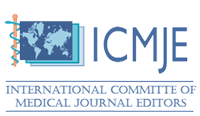Изучение влияния гамма-излучения на антибиотическую активность осмоустойчивой микробиоты в некоторых видах урбечей
Аннотация
Обоснование. Урбеч – традиционный национальный продукт народов Дагестана в последнее время находит все большее распространение среди приверженцев здорового питания. Урбеч, изготовленный по традиционным рецептурам, сохраняет свои свойства при хранении более 1-2 лет. Ассортимент урбечей постоянно расширяется. При этом некоторые из новых видов урбечей портятся в течение 5-7 сут.
Материалы и методы. Наиболее быстро портились образцы урбечей из кокосовой стружки и вяленых ягод шелковицы, арахисовый урбеч с тертыми какао-бобами и финиковым сиропом, а также кунжутный урбеч с медом. Урбечи были обработаны антиоксидантами и консервантами мягкого действия, обработаны гамма-излучением. Определяли влажность, рН, кислотное число жира, вязкость по стандартным методикам, количество патогенных микроорганизмов, в т.ч. сальмонелл, БГКП, дрожжей и плесневелых грибов, и осмофильных дрожжей.
Результаты. Введение антиокислителей увеличило сроки годности урбечей до 7-14 сут. Консерванты мягкого действия не оказали влияния на увеличение сроков годности урбечей. Препарат Полибиом увеличил сроки годности урбечей до 21-28 сут. Исследование микробиологических показателей урбечей с явными признаками порчи показало, что количество патогенных микроорганизмов, в т.ч. сальмонелл, КМАФАнМ, БГКП, плесеней и дрожжей не превышает показаний, регламентированных в ТР ТС 021/2011 значений. Обработка урбечей гамма-излучением показала, что доза излучения свыше 2 кГр приводит к изменению органолептических свойств. Во всех образцах урбечей присутствовали осмоустойчивые микроорганизмы. По сравнению с контрольными образцами при увеличении дозы излучения снижение осмофильной микрофлоры происходит в 10-55 раз.
Заключение. В процессе хранения новых разработанных видов урбечей установлено, что порча не связана с естественными процессами окисления жиров. В урбечах не обнаружены микроорганизмы, свыше регламентируемых в ТР ТС 021 значений. В опытных образцах урбечей развиваются осмофильные микроорганизмы. Гамма-облучение урбечей при допустимой для продуктов питания дозировке до 10 кГр снижает количество осмофильной микрофлоры от 10 до 55 раз. При обработке излучением дозой до 2 кГр сохраняются органолептические свойства урбечей. Соответственно, обработка ионизирующим излучением дозами до 2 кГр эффективна для сохранения органолептических и микробиологических показателей урбечей, в том числе нерегламентируемых нормативными документами в РФ осмофильных дрожжей, на определенном периоде хранения. Для исследования причин порчи урбечей требуется проведение дальнейших углубленных исследований микроорганизмов и продуктов их жизнедеятельности.
EDN: ASXKXX
Скачивания
Литература
Yagafar, M. K., Gainutdinov, T. R., Idrisov, A. M., Rakhmatullina, G. I., Yunusov, I. R. (2022). Assessment of biological safety of irradiated feed and food products. Veterinary Doctor, (2), 21-28. https://doi.org/10.33632/1998-698 EDN: https://elibrary.ru/thkguc
Bulatova, A. G., Sergeeva, G. A. (2021). Traditional food culture of the peoples of Dagestan. Moscow: Prospekt. 96 p. ISBN: 978-5-392-34147-4. EDN: https://elibrary.ru/sjdyb
Danyo, E. K., Ivantsova, M. N., Selezneva, I. S. (2024). Ionizing radiation effects on microorganisms and its applications in the food industry. Foods and Raw Materials, 12(1), 1-12. https://doi.org/10.21603/2308-4057-2024-1-583 EDN: https://elibrary.ru/xicyhk
Kushch, I. V., Vanner, N. E., Udavliev, D. I., Muradova, M. D. (2019). Microbiological safety of honey. Health, Food & Biotechnology, 1(3), 106-117. https://doi.org/10.36107/hfb.2019.i3.s267 EDN: https://elibrary.ru/syvgzy
Mordkovich, Ya. B., Baranova, L. I. (2023). Prospects for using radiation disinsection for quarantine phytosanitary disinfection. Phytosanitary. Plant Quarantine, (3), 60-64. https://doi.org/10.69536/u8906-0079-0762-a EDN: https://elibrary.ru/xrbxzc
Ramazanova, Z. B., Gadzhalova, F. A. (2023). Dagestan traditional dishes and food products as a marker of folk culture and regional brand. Heritage of Ages, (2), 31-45. https://doi.org/10.36343/SB.2023.34.2.002 EDN: https://elibrary.ru/iytxow
Sarukhanov, V. Ya., Shesterikov, A. Yu., Pomyasova, M. G., Kharlamov, V. A., Polyakova, I. V., Karpenko, E. I. (2022). Systematization of experimental research results and creation of the database «Radiation processing of agricultural raw materials and food products». Radiation and Risk (Bulletin of the National Radiation and Epidemiological Register), 31(3), 37-47. https://doi.org/10.21870/0131-3878-2022-31-3-37-47 EDN: https://elibrary.ru/adzlir
Nechaev, A. P., Samoylov, A. V., Bessonov, V. V., Nikolaeva, Yu. V., Tarasova, V. V., Pilipenko, O. V. (2020). Influence of antioxidants in native and micellated forms on shelf life of emulsion fat product. Voprosy Pitania, 89(5), 101-109. https://doi.org/10.24411/0042-8833-2020-10070 EDN: https://elibrary.ru/wwgvza
Bliznyuk, U. A., Borshchegovskaya, P. Yu., Zubritskaya, Ya. V., Ipatova, V. S., Malyuga, A. A., Rozanov, V. V., Chernyaev, A. P., Chulikova, N. S., Yurov, D. S. (2023). Effect of ionizing radiation on germination and biometric indicators of oilseed crops. Technologies of Living Systems, 20(1), 79-89. https://doi.org/10.18127/j.20700997-202301-09 EDN: https://elibrary.ru/ouawqp
Timakova, R. T., Tikhonov, S. L., Tikhonova, N. V. (2020). Ionizing radiation treatment as an innovative process approach in food storage technology for modern agriculture. IOP Conference Series: Earth and Environmental Science, 421(2):022015. https://doi.org/10.1088/1755-1315/421/2/022015. EDN: https://elibrary.ru/uxncvj
Timakova, R., Akulich, A., Samuylenko, T. (2021). The role of biotechnology in ensuring the preservation of dry composite mixtures. E3S Web of Conferences, 254:10018. https://doi.org/10.1051/e3sconf/202125410018. EDN: https://elibrary.ru/ugnqm
Timakova, R., Efremova, S., Zuparova, V. (2021). Ways to improve the technological properties of commercial grain and ensure its preservation. AIP Conference Proceedings, 2419:020017. https://doi.org/10.1063/5.0069615. EDN: https://elibrary.ru/hlylxv
Тутельян, В. А. (2012). Химический состав и калорийность российских продуктов питания: Справочник. М.: Дели Принт. 283 с. ISBN: 978-5-905170-20-1. EDN: https://elibrary.ru/qmcskv
Ahmad, F., Mohammad, Z. H., Zaidi, S. F., Ibrahim, S. A. (2023). A comprehensive review on the application of ultrasound for the preservation of fruits and vegetables. Journal of Food Process Engineering, 46(6), 1-27. https://doi.org/10.1111/jfpe.14291. EDN: https://elibrary.ru/uwgvee
Medvid, O. O., Peredera, Zh. O., Shcherbakova, N. S., Peredera, S. B. (2023). Analysis of the Italian honey market. Scientific Messenger of LNU of Veterinary Medicine and Biotechnologies. Series: Veterinary Sciences, 25(112), 16-21. https://doi.org/10.32718/nvlvet11202. EDN: https://elibrary.ru/uingcb
Andersen, N. R., Petersen, R. van D, Frost, M. B. (2022). Consumer interest in hummus made from different pulses: Effects of information about origin and variety seeking tendency. International Journal of Gastronomy and Food Science, 29(1):100572. https://doi.org/10.1016/j.ijgfs.2022.100572. EDN: https://elibrary.ru/fxcjkx
Anderson, N. M. (2018). Recent Advances in Low Moisture Food Pasteurization. Current Opinion in Food Science. https://doi.org/10.1016/j.cofs.2018.11.001
Coulombe, G., Tamber, S. (2022). Salmonella enterica Outbreaks Linked to the Consumption of Tahini and Tahini-Based Products. Microorganisms, 10(11):2299. https://doi.org/10.3390/microorganisms10112299. EDN: https://elibrary.ru/jgroig
Mousavi, Z. E., Hunt, K., Koolman, L., Butler, F., Fanning, S. (2023). Cronobacter Species in the Built Food Production Environment: A Review on Persistence, Pathogenicity, Regulation and Detection Methods. Microorganisms, 11, 2-24. https://doi.org/10.3390/microorganisms11061379. EDN: https://elibrary.ru/nsjdza
Davidson, A. (2014). The Oxford Companion to Food. Oxford: University Press. 921 p. (pp. 802-803). https://doi.org/10.1093/acref/9780199677337.001.0001
Lang, E., Rhee, M. S., Gonçalves, M. P. M. B. B., Sant’Ana, A. A. (2023). Desiccation strategies of Cronobacter sakazakii to survive in low moisture foods and environment. Trends in Food Science & Technology. 104241. https://doi.org/10.1016/j.tifs.2023.104241. EDN: https://elibrary.ru/ucorby
Al-Qadiri, H., Amr, A., Al-Holy, M. A., Shahein, M. (2021). Effect of gamma irradiation against microbial spoilage of hummus preserved under refrigerated storage. Food Science and Technology International, 27(7), 598-607. https://doi.org/10.1177/1082013220975891. EDN: https://elibrary.ru/kjvtfd
Esen, E., Turga, Ö. (2023). Prevention of the Growth of Salmonella Spp. and Listeria Spp. in Tahini by Using Antagonistic Microorganisms. Çukurova Tarım Ve Gıda Bilimleri Dergisi, 38(1), 26-39. https://doi.org/10.36846/CJAFS.2023.96. EDN: https://elibrary.ru/hmxuhs
Grasso, E. M., Stam, C. N., Anderson, N. M., Krishnamurthy, K. (2014). Heat and steam treatments. In: The microbiological safety of low water activity foods and spices. Springer. P. 403-426. https://doi.org/10.1007/978-1-4939-2062-4_21
Al-Nabulsi, A. A., Osaili, T. M., Olaimat, A. N., Almasri, W. E., Ayyash, M., Al-Holy, M. A., Jaradat, Z. W., Obaid, R. S., Holley, R. A. (2020). Inactivation of Salmonella spp. in tahini using plant essential oil extracts. Food microbiology, 86:103338. https://doi.org/10.1016/j.fm.2019.103338. EDN: https://elibrary.ru/zrezxq
Olaimat, A. N., Al-Nabulsi, A. A., Osaili, T. M., Al-Holy, M., Ghoush, M. A., Alkhalidy, H., Jaradat, Z. W., Ayyash, M., Holley, R. A. (2022). Inactivation of stressed Salmonella enterica, Escherichia coli O157:H7, and Listeria monocytogenes in hummus using low dose gamma irradiation. Journal of Food Science, 87(2), 845-855. https://doi.org/10.1111/1750-3841.16036. EDN: https://elibrary.ru/pyndjc
Loots, M., Chidamba, L., Korsten, L. (2021). Microbial load and prevalence of Escherichia coli and Salmonella spp. in macadamia nut production systems. Journal of Food Protection, 84(6), 1088-1096. https://doi.org/10.4315/JFP-20-238. EDN: https://elibrary.ru/dczecw
Mainardi, P. H., Bidoia, E. D. (2024). Food safety management: preventive strategies and control of pathogenic microorganisms in food. European Journal of Biological Research, 14(1), 13-32. https://doi.org/10.5281/zenodo.10724672
Topcam, H., Coşkun, E., Son, E., Kütük, D., Aytaç, S. A., Mert, B., Ozturk, S., Erdogdu, F. (2023). Microwave decontamination processing of tahini and process design considerations using a computational approach. Innovative Food Science & Emerging Technologies, 86:103137. https://doi.org/10.1016/j.ifset.2023.103377. EDN: https://elibrary.ru/ahugmg
Osaili, T. M., Al-Nabulsi, A. A., Aljaafreh, T. F. (2018). Use of gamma radiation to inactivate stressed Salmonella spp., Escherichia coli O157:H7 and Listeria monocytogenes in tahini halva. Food Microbiology, 278, 20-25. https://doi.org/10.1016/j.ijfoodmicro.2018.04.029
Sánchez-Maldonado, A. F., Lee, A., Farber, J. M. (2018). Methods for the control of foodborne pathogens in low-moisture foods. Annual Review of Food Science and Technology, 9, 177-208. https://doi.org/10.1146/annurev-food-030117-012304. EDN: https://elibrary.ru/vhacny
Olaimat, A. N., Al-Holy, M. A., Abughoush, M. H., Daseh, L., Al-Nabulsi, A. A., Osaili, T. M., Al-Rousan, W., Maghaydah, S., Ayyash, M., Holley, R. A. (2023). Survival of Salmonella enterica and Listeria monocytogenes in date palm paste and syrup at different storage temperatures. Journal of Food Science, 88(7), 2950-2959. https://doi.org/10.1111/1750-3841.16620. EDN: https://elibrary.ru/xbxxgn
Szpinak, V., Ganz, M., Yaron, S. (2022). Factors affecting the thermal resistance of Salmonella Typhimurium in tahin. Food Research International, 155:111088. https://doi.org/10.1016/j.foodres.2022.111088. EDN: https://elibrary.ru/lrpofk
Al-Nabulsi, A. A., Olaimat, A. N., Osaili, T. M., Shaker, R. R., Elabedeen, N. Z., Jaradat, Z. W., Abushelaibi, A., Holley, R. A. (2014). Use of acetic and citric acids to control Salmonella Typhimurium in tahini (sesame paste). Food Microbiology, 42, 102-108. https://doi.org/10.1016/j.fm.2014.02.020
Список литературы
Ягафар, М. К., Гайнутдинов, Т. Р., Идрисов, А. М., Рахматуллина, Г. И., Юнусов, И. Р. (2022). Оценка биологической безопасности облученных кормов и пищевых продуктов. Ветеринарный врач, (2), 21-28. https://doi.org/10.33632/1998-698. EDN: https://elibrary.ru/thkguc
Булатова, А. Г., Сергеева, Г. А. (2021). Традиционная культура питания народов Дагестана. М.: Проспект. 96 с. ISBN: 978-5-392-34147-4. EDN: https://elibrary.ru/sjdyb
Danyo, E. K., Ivantsova, M. N., Selezneva, I. S. (2024). Ionizing radiation effects on microorganisms and its applications in the food industry. Foods and Raw Materials, 12(1), 1-12. https://doi.org/10.21603/2308-4057-2024-1-583. EDN: https://elibrary.ru/xicyhk
Kushch, I. V., Vanner, N. E., Udavliev, D. I., Muradova, M. D. (2019). Microbiological Safety of Honey. Health, Food & Biotechnology, 1(3), 106-117. https://doi.org/10.36107/hfb.2019.i3.s267. EDN: https://elibrary.ru/syvgzy
Мордкович, Я. Б., Баранова, Л. И. (2023). Перспективы использования радиационной дезинсекции для карантинного фитосанитарного обеззараживания. Фитосанитария. Карантин растений, (3), 60-64. https://doi.org/10.69536/u8906-0079-0762-a. EDN: https://elibrary.ru/xrbxzc
Рамазанова, З. Б., Гаджалова, Ф. А. (2023). Дагестанские традиционные блюда и продукты питания как маркер народной культуры и бренд региона. Наследие веков, (2), 31-45. https://doi.org/10.36343/SB.2023.34.2.002. EDN: https://elibrary.ru/iytxow
Саруханов, В. Я., Шестериков, А. Ю., Помясова, М. Г., Харламов, В. А., Полякова, И. В., Карпенко, Е. И. (2022). Систематизация результатов экспериментальных исследований и создание базы данных «Радиационная обработка сельскохозяйственного сырья и пищевой продукции». Радиация и риск (Бюллетень Национального радиационно-эпидемиологического регистра), 31(3), 37-47. https://doi.org/10.21870/0131-3878-2022-31-3-37-47. EDN: https://elibrary.ru/adzlir
Нечаев, А. П., Самойлов, А. В., Бессонов, В. В., Николаева, Ю. В., Тарасова, В. В., Пилипенко, О. В. (2020). Влияние антиоксидантов в нативной и мицеллированной формах на сроки годности эмульсионного жирового продукта. Вопросы питания, 89(5), 101-109. https://doi.org/10.24411/0042-8833-2020-10070. EDN: https://elibrary.ru/wwgvza
Близнюк, У. А., Борщеговская, П. Ю., Зубрицкая, Я. В., Ипатова, В. С., Малюга, А. А., Розанов, В. В., Черняев, А. П., Чуликова, Н. С., Юров, Д. С. (2023). Влияние ионизирующего излучения на всхожесть и биометрические показатели масличных культур. Технологии живых систем, 20(1), 79-89. https://doi.org/10.18127/j.20700997-202301-09. EDN: https://elibrary.ru/ouawqp
Timakova, R. T., Tikhonov, S. L., Tikhonova, N. V. (2020). Ionizing radiation treatment as an innovative process approach in food storage technology for modern agriculture. IOP Conference Series: Earth and Environmental Science, 421(2):022015. https://doi.org/10.1088/1755-1315/421/2/022015. EDN: https://elibrary.ru/uxncvj
Timakova, R., Akulich, A., Samuylenko, T. (2021). The role of biotechnology in ensuring the preservation of dry composite mixtures. E3S Web of Conferences, 254:10018. https://doi.org/10.1051/e3sconf/202125410018. EDN: https://elibrary.ru/ugnqm
Timakova, R., Efremova, S., Zuparova, V. (2021). Ways to improve the technological properties of commercial grain and ensure its preservation. AIP Conference Proceedings, 2419:020017. https://doi.org/10.1063/5.0069615. EDN: https://elibrary.ru/hlylxv
Тутельян, В. А. (2012). Химический состав и калорийность российских продуктов питания: Справочник. М.: Дели Принт. 283 с. ISBN: 978-5-905170-20-1. EDN: https://elibrary.ru/qmcskv
Ahmad, F., Mohammad, Z. H., Zaidi, S. F., Ibrahim, S. A. (2023). A comprehensive review on the application of ultrasound for the preservation of fruits and vegetables. Journal of Food Process Engineering, 46(6), 1-27. https://doi.org/10.1111/jfpe.14291. EDN: https://elibrary.ru/uwgvee
Medvid, O. O., Peredera, Zh. O., Shcherbakova, N. S., Peredera, S. B. (2023). Analysis of the Italian honey market. Scientific Messenger of LNU of Veterinary Medicine and Biotechnologies. Series: Veterinary Sciences, 25(112), 16-21. https://doi.org/10.32718/nvlvet11202. EDN: https://elibrary.ru/uingcb
Andersen, N. R., Petersen, R. van D, Frost, M. B. (2022). Consumer interest in hummus made from different pulses: Effects of information about origin and variety seeking tendency. International Journal of Gastronomy and Food Science, 29(1):100572. https://doi.org/10.1016/j.ijgfs.2022.100572. EDN: https://elibrary.ru/fxcjkx
Anderson, N. M. (2018). Recent Advances in Low Moisture Food Pasteurization. Current Opinion in Food Science. https://doi.org/10.1016/j.cofs.2018.11.001
Coulombe, G., Tamber, S. (2022). Salmonella enterica Outbreaks Linked to the Consumption of Tahini and Tahini-Based Products. Microorganisms, 10(11):2299. https://doi.org/10.3390/microorganisms10112299. EDN: https://elibrary.ru/jgroig
Mousavi, Z. E., Hunt, K., Koolman, L., Butler, F., Fanning, S. (2023). Cronobacter Species in the Built Food Production Environment: A Review on Persistence, Pathogenicity, Regulation and Detection Methods. Microorganisms, 11, 2-24. https://doi.org/10.3390/microorganisms11061379. EDN: https://elibrary.ru/nsjdza
Davidson, A. (2014). The Oxford Companion to Food. Oxford: University Press. 921 p. (pp. 802-803). https://doi.org/10.1093/acref/9780199677337.001.0001
Lang, E., Rhee, M. S., Gonçalves, M. P. M. B. B., Sant’Ana, A. A. (2023). Desiccation strategies of Cronobacter sakazakii to survive in low moisture foods and environment. Trends in Food Science & Technology. 104241. https://doi.org/10.1016/j.tifs.2023.104241. EDN: https://elibrary.ru/ucorby
Al-Qadiri, H., Amr, A., Al-Holy, M. A., Shahein, M. (2021). Effect of gamma irradiation against microbial spoilage of hummus preserved under refrigerated storage. Food Science and Technology International, 27(7), 598-607. https://doi.org/10.1177/1082013220975891. EDN: https://elibrary.ru/kjvtfd
Esen, E., Turga, Ö. (2023). Prevention of the Growth of Salmonella Spp. and Listeria Spp. in Tahini by Using Antagonistic Microorganisms. Çukurova Tarım Ve Gıda Bilimleri Dergisi, 38(1), 26-39. https://doi.org/10.36846/CJAFS.2023.96. EDN: https://elibrary.ru/hmxuhs
Grasso, E. M., Stam, C. N., Anderson, N. M., Krishnamurthy, K. (2014). Heat and steam treatments. In: The microbiological safety of low water activity foods and spices. Springer. P. 403-426. https://doi.org/10.1007/978-1-4939-2062-4_21
Al-Nabulsi, A. A., Osaili, T. M., Olaimat, A. N., Almasri, W. E., Ayyash, M., Al-Holy, M. A., Jaradat, Z. W., Obaid, R. S., Holley, R. A. (2020). Inactivation of Salmonella spp. in tahini using plant essential oil extracts. Food microbiology, 86:103338. https://doi.org/10.1016/j.fm.2019.103338. EDN: https://elibrary.ru/zrezxq
Olaimat, A. N., Al-Nabulsi, A. A., Osaili, T. M., Al-Holy, M., Ghoush, M. A., Alkhalidy, H., Jaradat, Z. W., Ayyash, M., Holley, R. A. (2022). Inactivation of stressed Salmonella enterica, Escherichia coli O157:H7, and Listeria monocytogenes in hummus using low dose gamma irradiation. Journal of Food Science, 87(2), 845-855. https://doi.org/10.1111/1750-3841.16036. EDN: https://elibrary.ru/pyndjc
Loots, M., Chidamba, L., Korsten, L. (2021). Microbial load and prevalence of Escherichia coli and Salmonella spp. in macadamia nut production systems. Journal of Food Protection, 84(6), 1088-1096. https://doi.org/10.4315/JFP-20-238. EDN: https://elibrary.ru/dczecw
Mainardi, P. H., Bidoia, E. D. (2024). Food safety management: preventive strategies and control of pathogenic microorganisms in food. European Journal of Biological Research, 14(1), 13-32. https://doi.org/10.5281/zenodo.10724672
Topcam, H., Coşkun, E., Son, E., Kütük, D., Aytaç, S. A., Mert, B., Ozturk, S., Erdogdu, F. (2023). Microwave decontamination processing of tahini and process design considerations using a computational approach. Innovative Food Science & Emerging Technologies, 86:103137. https://doi.org/10.1016/j.ifset.2023.103377. EDN: https://elibrary.ru/ahugmg
Osaili, T. M., Al-Nabulsi, A. A., Aljaafreh, T. F. (2018). Use of gamma radiation to inactivate stressed Salmonella spp., Escherichia coli O157:H7 and Listeria monocytogenes in tahini halva. Food Microbiology, 278, 20-25. https://doi.org/10.1016/j.ijfoodmicro.2018.04.029
Sánchez-Maldonado, A. F., Lee, A., Farber, J. M. (2018). Methods for the control of foodborne pathogens in low-moisture foods. Annual Review of Food Science and Technology, 9, 177-208. https://doi.org/10.1146/annurev-food-030117-012304. EDN: https://elibrary.ru/vhacny
Olaimat, A. N., Al-Holy, M. A., Abughoush, M. H., Daseh, L., Al-Nabulsi, A. A., Osaili, T. M., Al-Rousan, W., Maghaydah, S., Ayyash, M., Holley, R. A. (2023). Survival of Salmonella enterica and Listeria monocytogenes in date palm paste and syrup at different storage temperatures. Journal of Food Science, 88(7), 2950-2959. https://doi.org/10.1111/1750-3841.16620. EDN: https://elibrary.ru/xbxxgn
Szpinak, V., Ganz, M., Yaron, S. (2022). Factors affecting the thermal resistance of Salmonella Typhimurium in tahin. Food Research International, 155:111088. https://doi.org/10.1016/j.foodres.2022.111088. EDN: https://elibrary.ru/lrpofk
Al-Nabulsi, A. A., Olaimat, A. N., Osaili, T. M., Shaker, R. R., Elabedeen, N. Z., Jaradat, Z. W., Abushelaibi, A., Holley, R. A. (2014). Use of acetic and citric acids to control Salmonella Typhimurium in tahini (sesame paste). Food Microbiology, 42, 102-108. https://doi.org/10.1016/j.fm.2014.02.020
Copyright (c) 2025 Roza T. Timakova, Andrey A. Khlopov, Elena S. Lybenko, Sergey O. Nikitin

Это произведение доступно по лицензии Creative Commons «Attribution-NonCommercial-NoDerivatives» («Атрибуция — Некоммерческое использование — Без производных произведений») 4.0 Всемирная.






















































